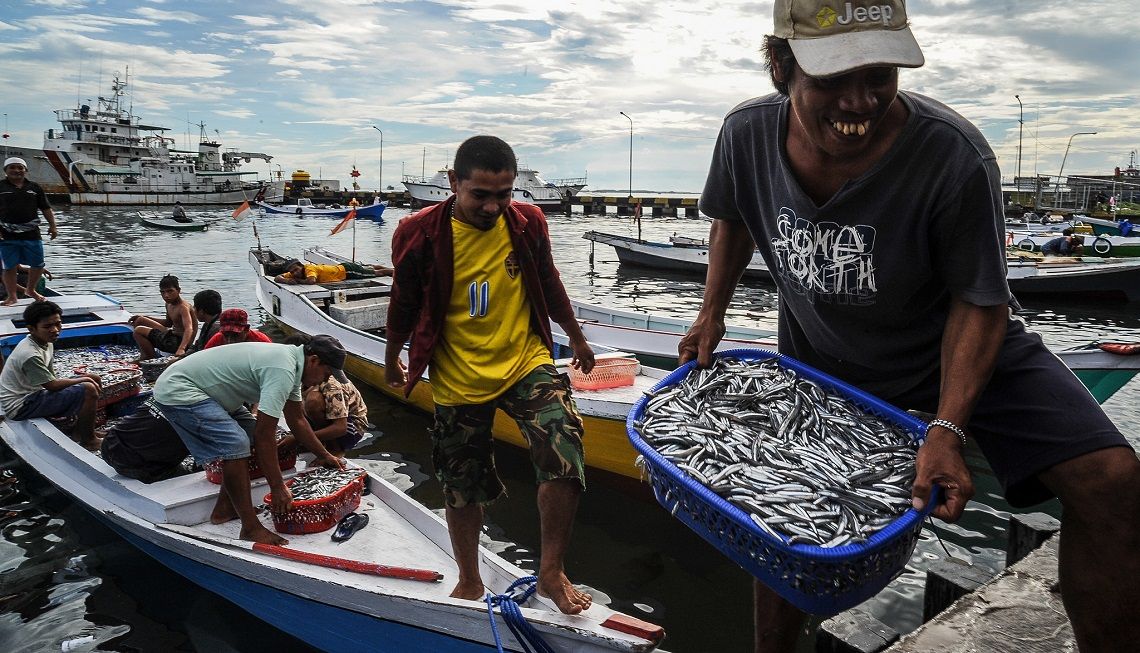Tracking Jakarta’s floods with Twitter
By Medha Basu
Researchers have tested a new way to get crucial data to disaster officials.

 How it works
The researchers scoured the internet for tweets with the word “banjir” - Bahasa Indonesia for ‘flood’ - in it. There were two conditions for the tweets to be included in the study: they must have a reference to a neighbourhood, road or landmark so it can be located on a map. And it should say how deep the water is.
The researchers did not use Twitter’s location feature for the study. “People can tweet about floods in areas where they are not [present] at that moment. The geo-tag is useless in this case,” van Loenen explained. Instead, they used a computer algorithm to search for the location and water depth in the messages themselves.
After filtering out the rest, they were left with about 900 tweets from the floods in January and February in Jakarta.
Finally, the researchers added Jakarta’s land elevation details to the map, showing how likely an area is flooded. For instance, if people are tweeting from a low-lying area, it is likely to mean that the entire low-lying area is flooded.
How it works
The researchers scoured the internet for tweets with the word “banjir” - Bahasa Indonesia for ‘flood’ - in it. There were two conditions for the tweets to be included in the study: they must have a reference to a neighbourhood, road or landmark so it can be located on a map. And it should say how deep the water is.
The researchers did not use Twitter’s location feature for the study. “People can tweet about floods in areas where they are not [present] at that moment. The geo-tag is useless in this case,” van Loenen explained. Instead, they used a computer algorithm to search for the location and water depth in the messages themselves.
After filtering out the rest, they were left with about 900 tweets from the floods in January and February in Jakarta.
Finally, the researchers added Jakarta’s land elevation details to the map, showing how likely an area is flooded. For instance, if people are tweeting from a low-lying area, it is likely to mean that the entire low-lying area is flooded.
 The evidence
Does this actually work? The researchers checked their map against other data - photos of the floods posted on Twitter. The flood map matched with 70% of the locations where the photos were taken, van Loenen said.
Although this is “not the most scientific approach” to verify the maps, “it indicated that there is large potential for this method especially if you consider that this is a pilot,” he said.
The key limitation of the approach is that the “observations are unreliable”, he admits. “Only with enough observations can the reliability increase. If in a certain area there are 5, 10 or 20 observations, then it becomes more reliable,” he explained. “900 observations is quite a lot,” van Loenen believes.
Officials need to have the right skills to use these maps, he said. The maps are only an “indication of what areas could be flooded so they need to be handled with care, and therefore, used by specialists”, he said.
Scaling the maps to a region or country could mean that the map is of lower resolution, so they may not be as accurate.
The team has just started a new study to fine-tune the method. The project with the World Bank is looking for better ways to validate the Twitter maps. If the maps can be correlated with other reliable data sources, they can pinpoint the flooded streets with even higher certainty.
The Jakarta pilot proves that this new technique can give flood managers crucial data. At this point, the caveat is that the map shows probability and not absolute numbers. But van Loenen is confident that with more tests and better technology, the technique will only get better.
The evidence
Does this actually work? The researchers checked their map against other data - photos of the floods posted on Twitter. The flood map matched with 70% of the locations where the photos were taken, van Loenen said.
Although this is “not the most scientific approach” to verify the maps, “it indicated that there is large potential for this method especially if you consider that this is a pilot,” he said.
The key limitation of the approach is that the “observations are unreliable”, he admits. “Only with enough observations can the reliability increase. If in a certain area there are 5, 10 or 20 observations, then it becomes more reliable,” he explained. “900 observations is quite a lot,” van Loenen believes.
Officials need to have the right skills to use these maps, he said. The maps are only an “indication of what areas could be flooded so they need to be handled with care, and therefore, used by specialists”, he said.
Scaling the maps to a region or country could mean that the map is of lower resolution, so they may not be as accurate.
The team has just started a new study to fine-tune the method. The project with the World Bank is looking for better ways to validate the Twitter maps. If the maps can be correlated with other reliable data sources, they can pinpoint the flooded streets with even higher certainty.
The Jakarta pilot proves that this new technique can give flood managers crucial data. At this point, the caveat is that the map shows probability and not absolute numbers. But van Loenen is confident that with more tests and better technology, the technique will only get better.